Struggling to predict next year's activewear trends? Falling behind costs sales. I'll show you the seven key styles for 2025 that you absolutely cannot miss.
For 2025, focus on sustainable fabrics, tech-integrated apparel, and multifunctional designs. Key trends also include adaptive fits for personalized comfort, bold athleisure aesthetics, and transparent, ethical production. These styles blend performance with modern consumer values.
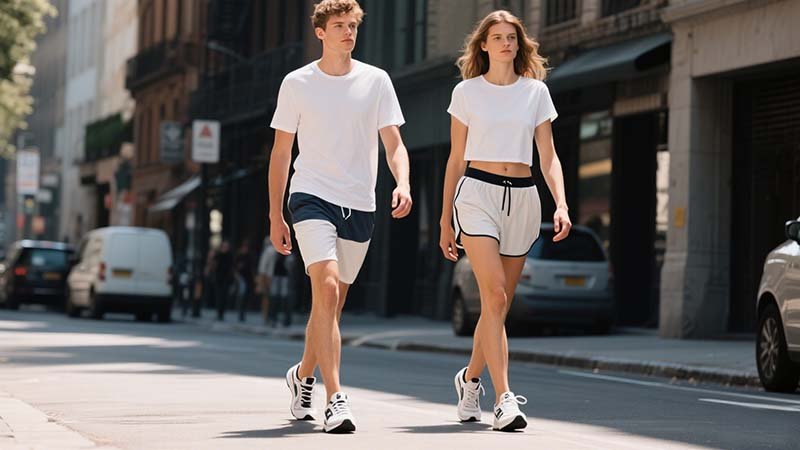
I’ve spent decades in this industry, starting in my small studio and growing with brands from around the world. I've watched trends come and go. But what's happening now is more than a trend. It's a big change in what customers want from their clothes. They want performance, but they also want style, sustainability, and technology. Let’s look at each of these new styles. This will help you see the great opportunities available for your brand.
Sustainable Fabrics Revolution: Is it truly eco-friendly and performance-driven?
Customers demand eco-friendly gear, but you worry it won't perform. This conflict can hurt your brand's credibility. I'll show you how new materials deliver both sustainability and performance.
Yes, it is. Modern sustainable fabrics like recycled polyester and plant-based Tencel now offer superior moisture-wicking and durability. Brands are adopting closed-loop systems, proving that high performance and environmental responsibility can coexist.
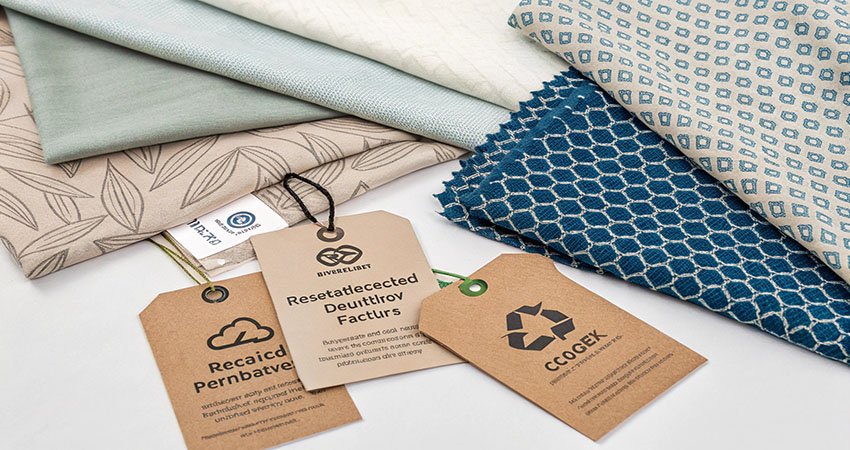
In my years of making clothes, the biggest recent change I've seen is the demand for sustainable fabrics that actually work. A few years ago, a client came to me wanting a full collection from recycled materials. They were worried the feel and stretch wouldn't be as good as traditional fabrics. Today, that's not a problem. The technology has improved so much. We now work with materials that are not only good for the planet but also exceed the performance of older fabrics. This isn't just about using recycled plastic bottles anymore. It's a full-circle approach.
The New Age of Green Materials
The focus is on creating a system where nothing is wasted. It's about smart choices from beginning to end.
- Closed-Loop Systems: This is where old garments are broken down and spun into new yarn. It reduces landfill waste and our reliance on new resources.
- Plant-Based Fibers: Materials from bamboo, hemp, and eucalyptus (like Tencel) are becoming popular. They are naturally breathable, strong, and biodegradable.
- Low Impact Dyes: The dyeing process traditionally uses a lot of water and harsh chemicals. New methods use less water and avoid harmful substances.
| Fabric Type | Source | Key Performance Benefits |
|---|---|---|
| Recycled Polyester (rPET) | Plastic bottles, old fabric | Durable, water-resistant, great color retention |
| Tencel™ Lyocell | Sustainably sourced wood pulp | Extremely soft, breathable, moisture-wicking |
| Organic Cotton | Non-GMO cotton plants | Soft, hypoallergenic, breathable for low-impact activity |
| Hemp | Hemp plant | Very strong, durable, naturally antimicrobial |
Smart Textiles: Can technology really be integrated with fitness clothing?
Want to offer innovative tech-wear but fear it's complex and impractical? This hesitation can make your brand seem outdated. Smart textiles are now more accessible and durable than ever.
Absolutely. Smart textiles seamlessly integrate technology with fitness apparel. Garments now feature embedded sensors for heart rate tracking, thermal-regulating fabrics, and even washable electronics. These innovations offer athletes real-time data and enhanced comfort.
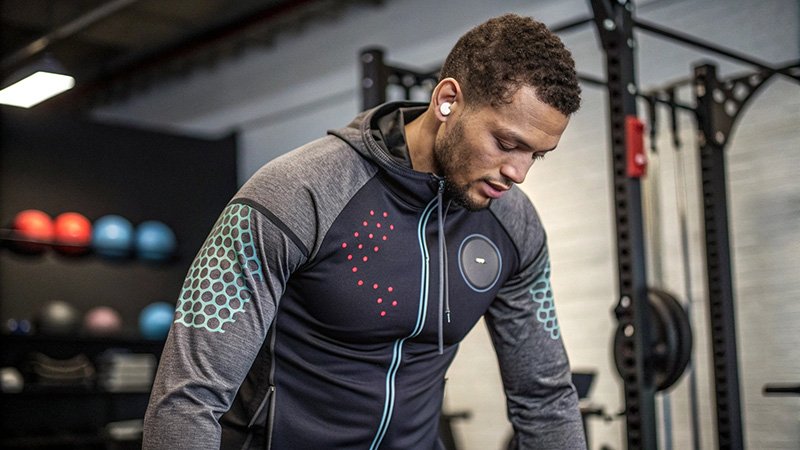
I remember when "tech" in clothing meant a pocket for your phone. Now, the clothing is the technology. It’s a huge leap. My team and I recently worked on a project to embed washable sensors into compression tops. The biggest challenge was ensuring the tech could survive dozens of washes and intense workouts. We spent months testing with our partners to get it right. The result was a garment that looked and felt like high-quality activewear but provided data that once required a chest strap. This is the future. It’s about making technology invisible and helpful, not complicated.
Making Technology Wearable
The goal is to give users helpful information without getting in their way. The tech should feel like a natural part of the clothing.
- Seamless Data Tracking: Tiny, flexible sensors woven into the fabric can monitor heart rate, breathing, and muscle activity. They connect via Bluetooth to apps on a phone.
- Adaptive Comfort: Some fabrics now use phase-change materials that absorb or release heat to keep your body at the perfect temperature.
- Durability is Key: The real innovation is making the electronics durable and washable. Special coatings and sealed components ensure the tech lasts as long as the garment itself.
| Technology Integration | How It Works | Benefit for the User |
|---|---|---|
| Biometric Sensors | Conductive threads woven into fabric | Tracks heart rate, ECG, and breathing without a strap |
| Thermal Regulation | Micro-encapsulated materials | Absorbs heat when you're hot, releases it when you're cold |
| UV Protective Weaves | Tightly woven fabric with a UPF rating | Blocks harmful UV rays during outdoor workouts |
| Embedded Haptics | Small vibrating motors in the fabric | Provides feedback to correct posture or pace |
Adaptive Fit Designs: How do they achieve personalized comfort and flexibility?
A one-size-fits-all approach no longer works. Customers with diverse body types feel excluded, costing you sales. Adaptive designs offer a personalized fit, creating loyalty and inclusivity.
Adaptive fits use advanced stretch fabrics, body-mapping construction, and adjustable features like drawcords. This allows a garment to conform to various body shapes, providing personalized comfort that feels custom-made for the wearer.
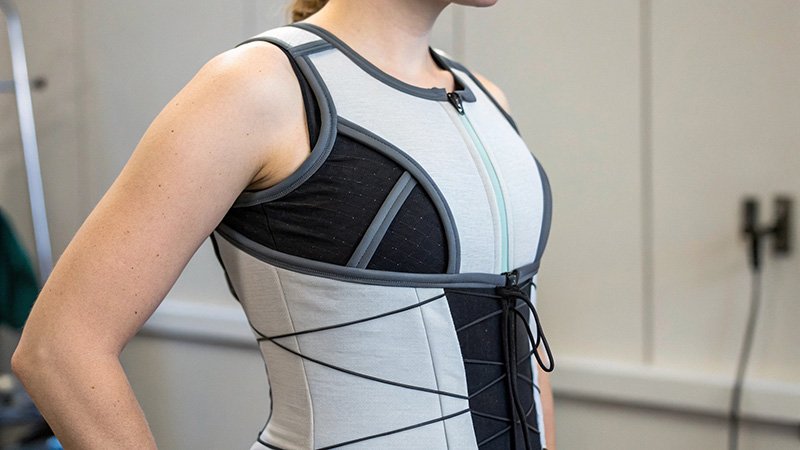
I believe clothing should make people feel confident. For a long time, the industry struggled with fit. A client who specialized in yoga wear wanted to serve more body types without creating dozens of different sizes. This is where adaptive design became so important. We moved to seamless knitting machines that could create different zones of compression and stretch in a single piece of fabric. We designed leggings that felt gentle on the waist but supportive on the legs. The feedback was amazing. Customers finally felt seen and understood. That is the power of a good fit. It creates a deep, emotional connection to a brand.
The Science of a Perfect Fit
It's not magic; it's smart engineering. By combining material science with a deep understanding of the human body, we can create clothes that move with you.
- Four-Way Stretch: This is the standard now. Fabrics that stretch and recover on both the cross and lengthwise grains are essential.
- Body-Mapping: This technique uses data to place different fabric structures in different areas. For example, more breathable mesh goes in high-sweat zones.
- Adjustable Elements: Small things like internal drawstrings, adjustable straps, and convertible cuffs make a huge difference. They let the user fine-tune the fit.
| Adaptive Technology | Description | Primary Advantage |
|---|---|---|
| Seamless Knitting | Garments are knitted in one continuous piece | No chafing from seams, zoned compression and stretch |
| Compression Zoning | Higher compression in key muscle groups | Provides support, aids recovery, and enhances shape |
| High-Elastane Blends | Fabrics with a high percentage of Lycra or Spandex | Incredible stretch and recovery, feels like a second skin |
Athleisure Aesthetics: How can you blend style with functionality?
Your customers live busy lives and need clothes for both the gym and street. Single-purpose workout gear feels limited. Offer stylish athleisure to meet their modern lifestyle needs.
Blend style and function by using high-performance fabrics in fashionable silhouettes. Focus on clean lines, modern color palettes, and subtle branding. Features like hidden pockets and wrinkle-resistant materials ensure the apparel looks good anywhere.
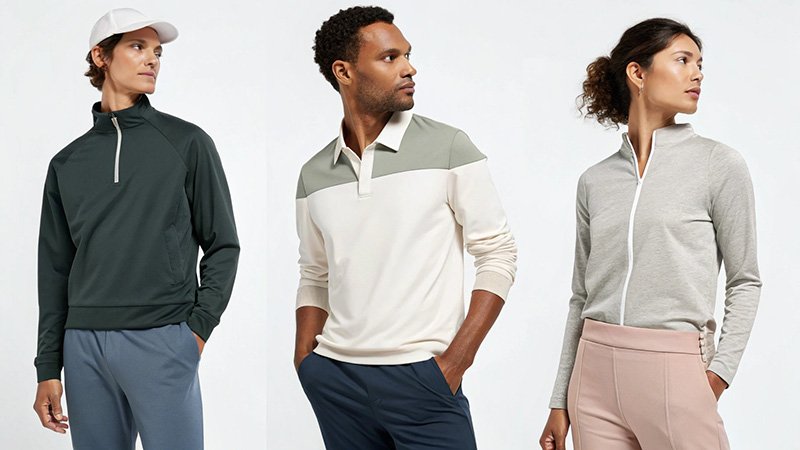
The line between workout clothes and everyday clothes has disappeared. I see it in the orders we get every day. Brands are asking for joggers made from technical merino wool that can handle a run but also look sharp in a cafe. They want jackets with clean, simple designs that have hidden vents and waterproof zippers. The key is subtlety. The performance features shouldn't scream "gym clothes." From my perspective as a craftsman, the challenge is exciting. It requires a higher level of detail and finishing. The stitching has to be perfect because the garment will be seen in many different settings.
Merging Performance and Style
Creating true athleisure is a balancing act. Every element, from the fabric to the buttons, must serve both fashion and function.
- Elevated Materials: Using fabrics like bonded jersey, technical twill, and premium French terry gives a more structured, polished look than traditional activewear fabrics.
- Thoughtful Details: Replacing sporty zippers with sleek, branded pulls or using hidden magnetic closures can instantly elevate a design.
- Versatile Silhouettes: The focus is on classic, timeless shapes like tailored joggers, bomber jackets, and minimalist tops that can be easily layered.
| Gym-Ready Feature | Street-Style Counterpart |
|---|---|
| Mesh Ventilation Panels | Laser-cut perforations in a subtle pattern |
| Bulky Cargo Pockets | Bonded, zippered pockets that sit flat |
| Loud, reflective logos | Tonal, embroidered logos or subtle reflective piping |
| Standard Drawstring | Flat, woven cord with sleek metal aglets |
Bold Prints and Colors: Are these just expressive style statements?
Plain, muted activewear can feel boring and fail to stand out. Customers want to express themselves, even during workouts. Bold designs help your brand capture attention and connect emotionally.
They are much more than just style. Bold prints and strategic color-blocking can enhance the body's silhouette and boost wearer confidence. For brands, unique patterns create a strong, recognizable visual identity.
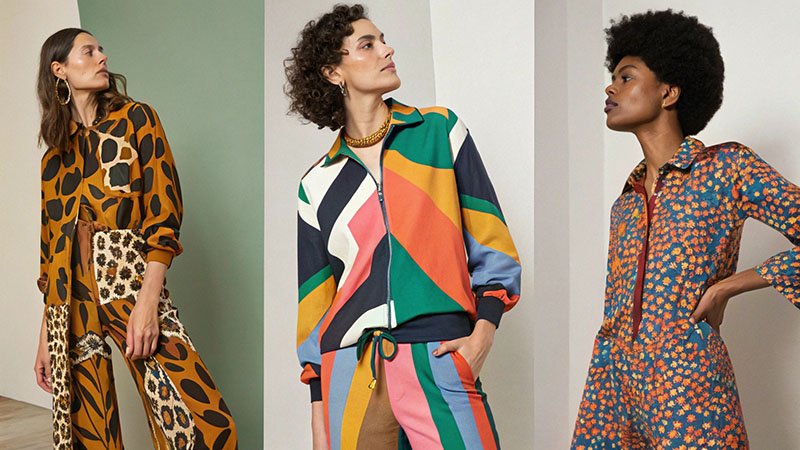
I've always loved color and pattern. In my early days, most activewear was black, grey, or navy. Today, my studio is filled with vibrant fabrics. We recently worked with a new brand that wanted to build its identity around custom prints inspired by nature. We used digital printing technology to get incredible detail and color depth on recycled polyester fabric. Not only did the collection look beautiful, but it was also instantly recognizable. When customers saw that unique floral print, they knew the brand. Boldness is not just about aesthetics; it's a smart business strategy. It makes your product memorable in a very crowded market.
The Strategy Behind a Strong Visual
Using color and print is a powerful tool. It can influence how a person feels and how others see your brand.
- Color Psychology: Colors can affect mood and energy levels. Bright yellows and oranges can be energizing, while blues and greens can feel calming and focused.
- Contouring with Color: Using darker side panels and lighter colors in the center can create a slimming, athletic silhouette. This is a simple but effective design trick.
- Customization is King: Digital printing allows for unlimited creativity. Brands can create their own signature patterns, making their collections truly one-of-a-kind.
| Printing Technique | Best For | Considerations |
|---|---|---|
| Digital Printing | Complex, multi-color, detailed prints | More expensive for large runs, but perfect for small MOQs |
| Screen Printing | Simple, bold graphics with 1-4 colors | Cost-effective for large quantities, very durable |
| Sublimation | All-over prints on polyester fabrics | Print becomes part of the fabric, won't crack or peel |
Sustainable Production Methods: What do ethical and transparent practices look like?
Customers are wary of greenwashing and demand real transparency. Hiding your production process creates distrust. Ethical manufacturing builds a powerful, honest brand story that customers will support.
Ethical practices involve ensuring fair labor conditions, minimizing waste through on-demand manufacturing, and using less water. Transparency means openly sharing your supply chain. This honesty builds deep trust with consumers.
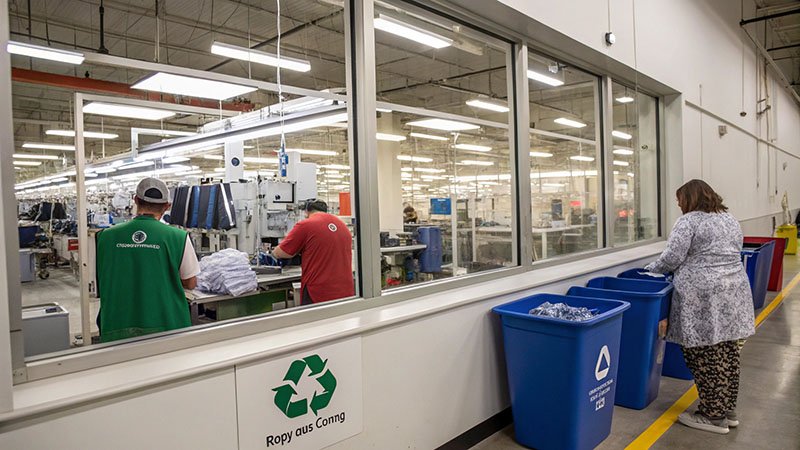
This is personal for me. I started Wearzio because I love the craft of making clothes. That love comes with a deep respect for the people who do the work and for the resources we use. When a brand partners with us, they are not just buying a product. They are trusting us with their vision. That's why we invite our clients to see our process. We show them how we cut fabric to minimize waste and how we treat our skilled sewers with respect. Being transparent isn't a marketing trend for us; it is the foundation of our business. Your customers want to know the story behind their clothes, and an honest story is the most powerful one you can tell.
Building an Honest Supply Chain
It's about making conscious decisions at every step of the manufacturing journey, from raw material to finished garment.
- On-Demand Production: Making smaller batches of clothing helps reduce the risk of overproduction, which is a huge source of waste in the fashion industry.
- Waste Reduction: Smart pattern-making software can map out cuts on a piece of fabric to create the least amount of scrap. Scraps can then be repurposed.
- Ethical Labor: This means paying fair wages, ensuring safe working conditions, and valuing the artisans who make the clothes. Look for factory certifications like Fair Trade or SA8000.
| Traditional Method | Sustainable Alternative | Why It Matters |
|---|---|---|
| Large batch production | Small batch or on-demand production | Reduces waste from unsold inventory |
| High-water fabric dyeing | Waterless dyeing (e.g., CO2 dyeing) | Conserves enormous amounts of a vital resource |
| Discarding fabric scraps | Recycling scraps into new products | Creates a more circular economy and reduces waste |
| Opaque supply chain | Full transparency with factory partners | Builds consumer trust and ensures ethical treatment |
Multifunctional Apparel: Is versatility at its best the new standard?
Modern closets are shrinking, and consumers want value. Single-use items feel wasteful. Multifunctional apparel offers the versatility that justifies a purchase and builds brand loyalty.
Yes, versatility is the new standard. Multifunctional clothing combines features like moisture-wicking, UV protection, and ample storage. Convertible pieces allow one garment to adapt to different activities, providing maximum value.
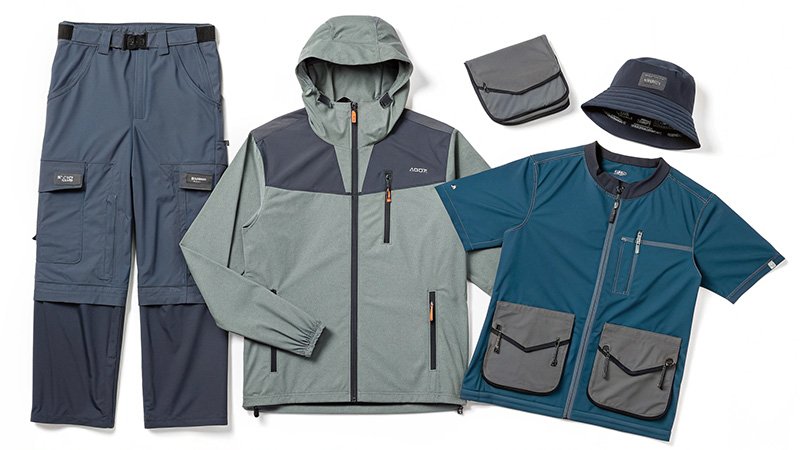
The most valuable item in a person's wardrobe is the one they wear the most. As a manufacturer, our goal is to help brands create that item. I had a client who wanted to make the "ultimate travel hoodie." It needed to be comfortable for a long flight, stylish enough for a city tour, and functional for a morning run. We worked together to select a wrinkle-resistant merino blend fabric. We designed hidden, zippered pockets for a passport and phone. We even added thumbholes that could be tucked away. It was a complex piece to make, but it delivered incredible value to the customer. This is what modern consumers expect: fewer, better things.
Designing Clothes That Do More
Versatility doesn't happen by accident. It requires clever design and a deep understanding of the customer's daily life.
- Performance Blends: Use fabrics that offer multiple benefits at once, like stretch, moisture-wicking, odor resistance, and UV protection.
- Smart Storage: Pockets are crucial. They should be placed thoughtfully, often hidden in seams or secured with zippers to keep items safe during movement.
- Convertible Features: Elements like zip-off sleeves on a jacket or legs on a pair of pants dramatically increase a garment's usefulness across different climates and activities.
| Garment Example: The "Commuter" Jacket |
|---|
| Workout Feature: Lightweight, breathable fabric with laser-cut-ventilation under the arms. |
| Office Feature: Sleek, minimalist design and neutral color that layers well over a shirt. |
| Travel Feature: Wrinkle-resistant material and a hidden internal pocket for a passport. |
| Weather Feature: A DWR (Durable Water Repellent) finish and a stowable hood. |
Conclusion
In 2025, successful activewear combines innovation, style, and ethics. By embracing these seven trends, your brand can meet modern demands and build a lasting connection with your customers.
.png)
